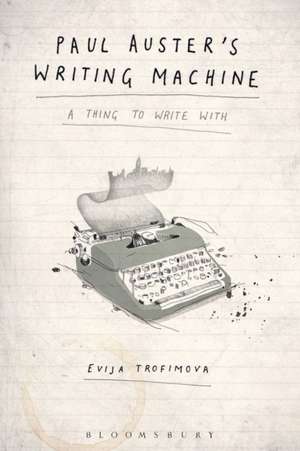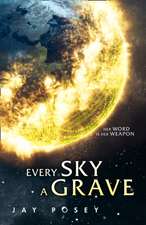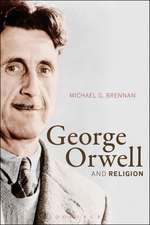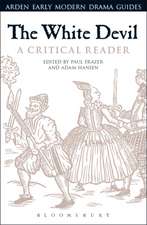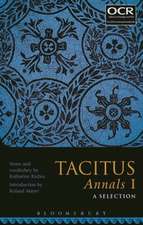Paul Auster's Writing Machine: A Thing to Write With
Autor Evija Trofimovaen Limba Engleză Paperback – 24 feb 2016
| Toate formatele și edițiile | Preț | Express |
|---|---|---|
| Paperback (1) | 257.03 lei 6-8 săpt. | |
| Bloomsbury Publishing – 24 feb 2016 | 257.03 lei 6-8 săpt. | |
| Hardback (1) | 714.51 lei 6-8 săpt. | |
| Bloomsbury Publishing – 22 oct 2014 | 714.51 lei 6-8 săpt. |
Preț: 257.03 lei
Preț vechi: 330.94 lei
-22% Nou
Puncte Express: 386
Preț estimativ în valută:
49.21€ • 50.60$ • 40.82£
49.21€ • 50.60$ • 40.82£
Carte tipărită la comandă
Livrare economică 19 februarie-05 martie
Preluare comenzi: 021 569.72.76
Specificații
ISBN-13: 9781501318252
ISBN-10: 150131825X
Pagini: 240
Ilustrații: black & white illustrations
Dimensiuni: 152 x 229 x 13 mm
Greutate: 0.34 kg
Ediția:NIPPOD
Editura: Bloomsbury Publishing
Colecția Bloomsbury Academic
Locul publicării:New York, United States
ISBN-10: 150131825X
Pagini: 240
Ilustrații: black & white illustrations
Dimensiuni: 152 x 229 x 13 mm
Greutate: 0.34 kg
Ediția:NIPPOD
Editura: Bloomsbury Publishing
Colecția Bloomsbury Academic
Locul publicării:New York, United States
Caracteristici
An original and intrepid reading of one of the best-known contemporary American authors
Notă biografică
Evija Trofimova (PhD, University of Auckland) is a writer, translator and critic who divides her time between Latvia and New Zealand.
Cuprins
AcknowledgementsList of IllustrationsPreface Introduction: Paul Auster's Intratext Uncontainable Assemblages "Thinging" Things Chapter 1: Smoke that Means the Entire World The Writer's Prosthetic Cigarette The Gathering of the Tobacco Shop Smoke is the Story Itself Chapter 2: The Story of the Typewriter Typewriter Associations The Typewriter-Assemblage Rhizomatic Typewriting The Machinic Muse Chapter 3: Doubles and Disappearances The Birth of the Double The Double Functions of the Double The Doppelgänger in the Other Sex Double Game, and the Mingling of Texts Gotham Handbook Chapter 4: New York, Where All Quests Fail In Search of Auster's City In Austeralia Discovering the Notebooks Encountering the Writer Inconclusion NotesBibliographyCopyright PermissionsIndex
Recenzii
Trofimova offers an intricate study of one of the US's most famous writers. Pointing to such influences as Deleuze, Guattari, and Litaour [sic], this work provides an eclectic and comprehensive scholarly analysis of Auster's work . Trofimova carefully assesses both screenplays and fiction, tracing the recurrence of fundamental themes, symbols, and phrases of speech. This overarching analysis provides an answer to the question of where meaning is located in the texts. Specifically focused on films, the book provides a very strong analysis of all published works. Summing Up: Recommended. All readers.
Evija Trofimova's Paul Auster's Writing Machine, a brilliant study of one of America's leading prose-writers, approaches its subject in a new and intriguing way. Trofimova considers Auster works that have been overlooked in the past: Auster's collaborative projects, Auster's films, and even a volume removed from circulation. Her theoretically astute book is a lot of fun, too. Its subtitle is A Thing to Write With and this book provides the reader with plenty of things to think about.
Trofimova manages to imbue Auster's complex universe with new tools to observe and critique the products of his beloved typewriter, an object of persistent examination. Auster is often decidedly at home in a dislocated literary landscape, and Trofimova's book provides a welcome sense of stability. It emphasises the 'thingness' of objects that give a sturdiness, a ballast, to a body of work that is so often associated with loose or dissolving ontological grounds. Trofimova doesn't merely retrace these steps with new language, but rather constructs a revitalising approach to understanding Auster's idiosyncratic propositions for the locality of the line between text and world, and the relationship between the two.
By engaging in a careful exposition of the historical, social, political, cultural and literary implications of these 'things,' Trofimova is essentially involved in laying bare their signification. She indeed elevates the signs 'cigarette,' 'typewriter,' 'Doppelganger' and 'New York' to the order of myths. Although she makes no reference to Roland Barthes's Mythologies, her approach is reminiscent of that of Barthes with respect to the various 'myths' he studies in it. Paul Auster's Writing Machine is the articulation of a complex order of signification that is all but named, and that at once participates in, and is a product of, the process of writing.
Paul Auster's Writing Machine traces criss-crossing routes through that wonderful landscape of the imagination, 'Austeralia'. Trofimova traverses the novels and films of Paul Auster with a compass that points to the magnetic north of theorists Deleuze, Guattari and Latour and also detours into diverse topics. Amongst the off-beaten tracks she explores with scholarly fascination are Auster's relationship with his typewriter; the role of cigarettes and cigars in his writing; the centrality of the notebook as a space of discovery; and the cinematic sensibility tying together his screenplays and fictions. The study offers rich, original and rewarding readings of Auster's texts.
Evija Trofimova offers a dazzling critical reassessment of Auster's oeuvre, and this book establishes her as a leading expert in her field. Auster has been well served by his critics, but reading this book is like wearing a pair of magic spectacles that help us to see things anew, and to see new things. A book to cherish.
With Paul Auster's Writing Machine, Evija Trofimova moves to the forefront of scholars working at the busy intersection of media archaeology, materialities of communication, thing theory, and literary studies. All writers, after all, write with the aid of particular things; in this remarkable study, the objects, props, and accouterments littering Auster's scenes of writing-his cigarettes, (red) notebooks, and typewriters, among others-become entry points to the key formal elements of his oeuvre, including 'mises en abyme, narrative splits, and alternative storylines.'
Trofimova's work uses the work of Sophie Calle to illuminate Auster's work and what is particular to his own work in the broader categories of identity and the self. . In true Auster fashion, Trofimova's analysis becomes self-reflexive, showing the breakdown of traditional criticism. . Trofimova herself invites readers to create their own conclusions when she questions if her work will 'concern the curious relationship that exists between the text, its author, his critic and the reader in the production of meaning' - an assemblage that breaks traditional hierarchies. Trofimova's book, ultimately, belongs to the reader as well.
Evija Trofimova's Paul Auster's Writing Machine, a brilliant study of one of America's leading prose-writers, approaches its subject in a new and intriguing way. Trofimova considers Auster works that have been overlooked in the past: Auster's collaborative projects, Auster's films, and even a volume removed from circulation. Her theoretically astute book is a lot of fun, too. Its subtitle is A Thing to Write With and this book provides the reader with plenty of things to think about.
Trofimova manages to imbue Auster's complex universe with new tools to observe and critique the products of his beloved typewriter, an object of persistent examination. Auster is often decidedly at home in a dislocated literary landscape, and Trofimova's book provides a welcome sense of stability. It emphasises the 'thingness' of objects that give a sturdiness, a ballast, to a body of work that is so often associated with loose or dissolving ontological grounds. Trofimova doesn't merely retrace these steps with new language, but rather constructs a revitalising approach to understanding Auster's idiosyncratic propositions for the locality of the line between text and world, and the relationship between the two.
By engaging in a careful exposition of the historical, social, political, cultural and literary implications of these 'things,' Trofimova is essentially involved in laying bare their signification. She indeed elevates the signs 'cigarette,' 'typewriter,' 'Doppelganger' and 'New York' to the order of myths. Although she makes no reference to Roland Barthes's Mythologies, her approach is reminiscent of that of Barthes with respect to the various 'myths' he studies in it. Paul Auster's Writing Machine is the articulation of a complex order of signification that is all but named, and that at once participates in, and is a product of, the process of writing.
Paul Auster's Writing Machine traces criss-crossing routes through that wonderful landscape of the imagination, 'Austeralia'. Trofimova traverses the novels and films of Paul Auster with a compass that points to the magnetic north of theorists Deleuze, Guattari and Latour and also detours into diverse topics. Amongst the off-beaten tracks she explores with scholarly fascination are Auster's relationship with his typewriter; the role of cigarettes and cigars in his writing; the centrality of the notebook as a space of discovery; and the cinematic sensibility tying together his screenplays and fictions. The study offers rich, original and rewarding readings of Auster's texts.
Evija Trofimova offers a dazzling critical reassessment of Auster's oeuvre, and this book establishes her as a leading expert in her field. Auster has been well served by his critics, but reading this book is like wearing a pair of magic spectacles that help us to see things anew, and to see new things. A book to cherish.
With Paul Auster's Writing Machine, Evija Trofimova moves to the forefront of scholars working at the busy intersection of media archaeology, materialities of communication, thing theory, and literary studies. All writers, after all, write with the aid of particular things; in this remarkable study, the objects, props, and accouterments littering Auster's scenes of writing-his cigarettes, (red) notebooks, and typewriters, among others-become entry points to the key formal elements of his oeuvre, including 'mises en abyme, narrative splits, and alternative storylines.'
Trofimova's work uses the work of Sophie Calle to illuminate Auster's work and what is particular to his own work in the broader categories of identity and the self. . In true Auster fashion, Trofimova's analysis becomes self-reflexive, showing the breakdown of traditional criticism. . Trofimova herself invites readers to create their own conclusions when she questions if her work will 'concern the curious relationship that exists between the text, its author, his critic and the reader in the production of meaning' - an assemblage that breaks traditional hierarchies. Trofimova's book, ultimately, belongs to the reader as well.
